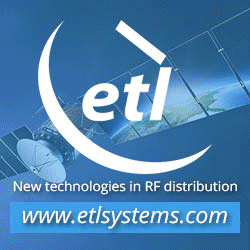Satcom Global extends Aura VSAT coverage in the North and South Pacific
Satcom Global announced a
significant enhancement to its Ku-band Aura VSAT
network, with the addition of the Eutelsat 174A
(E174A) North Pacific and South Pacific
satellite beams.
The new coverage will
strengthen and extend the Aura network across
the North Pacific and Oceania regions,
supporting the high-quality connectivity demands
of a diverse range of maritime sectors including
shipping, commercial fishing, workboat, offshore
supply and leisure.
The E174A North Pacific
beam will benefit customers sailing Transpacific
routes and operating out of the West Coast of
North America, providing an additional layer of
satellite coverage over key US maritime regions
such as Alaska, Vancouver, Seattle, and the
major ports in California, ultimately extending
coverage down to the Western coast of Mexico.
The E174A South Pacific
beam will overlap existing Aura network beams
covering Western and Northern Australia,
enhancing Ku-band service quality for vessels
operating in those areas, as well as extending
service coverage to the East of New Zealand.
Satcom Global has secured
the high capacity E174A North and South Pacific
beams with a guaranteed level of service quality
(Committed Information Rate), with the option to
scale up capacity, futureproofing emerging
requirements. Adding new satellite beams to the
Aura network is part of Satcom Global’s approach
to deliver the most inclusive geographic
coverage, as well as the highest quality
connectivity to customers, with overlapping
beams that provide both redundancy and abundant
capacity.
The North and South Pacific
E174A satellite beams were added to the Aura
network at the beginning of April 2021. These
most recent enhancements follow the introduction
of the NSS-6 satellite to the Aura network in
November 2020, covering the North Pacific Ocean,
and the addition of Astra 4A Nordic and SES-12
IOR beams in March 2021.
The Eutelsat 174A
satellite, built by Thales Alenia Space, is
located at 174° East, offering extensive
coverage and high-bandwidth capability over the
Asia Pacific region via a payload of Ku-band
transponders accessing interconnecting beams.











